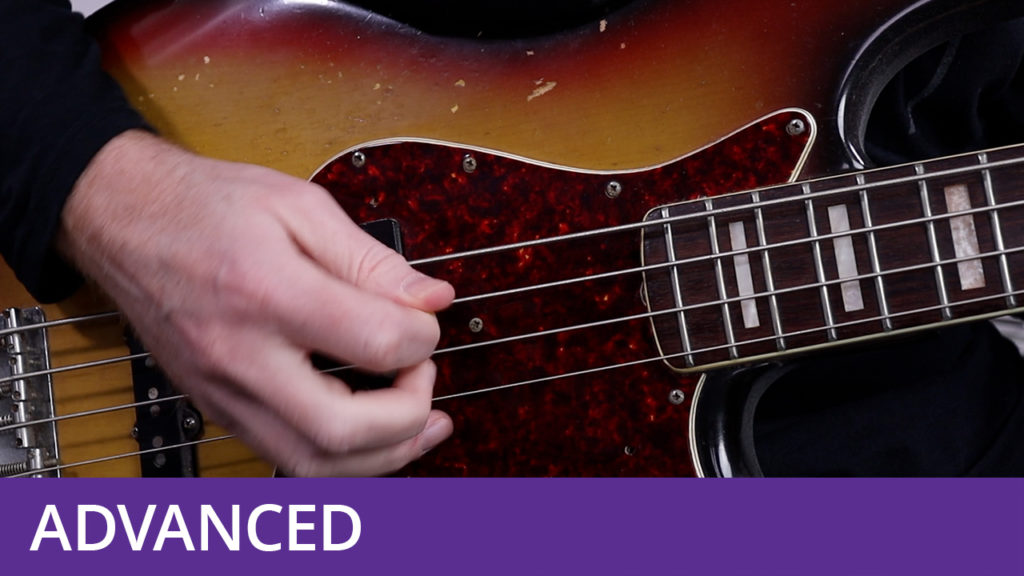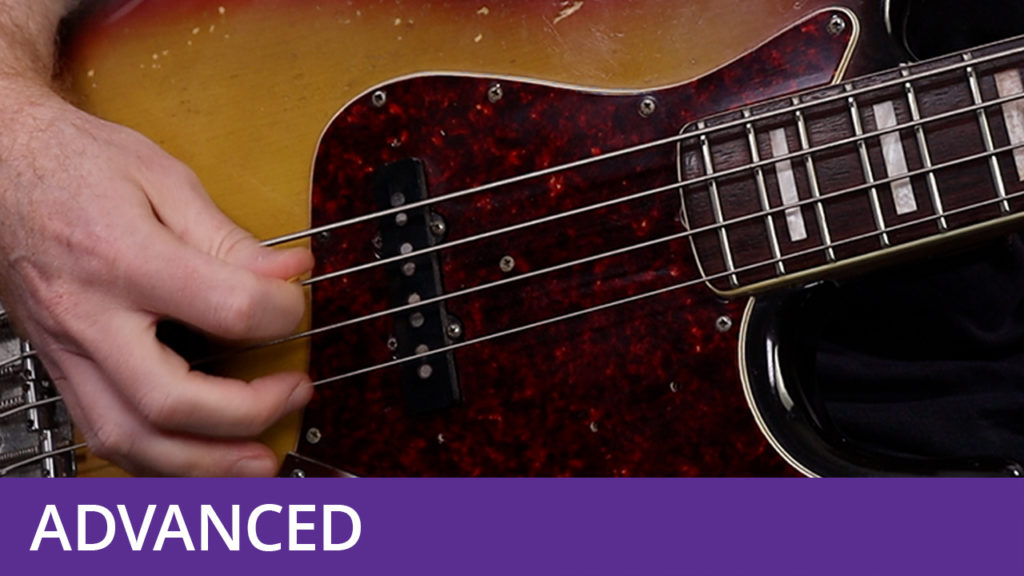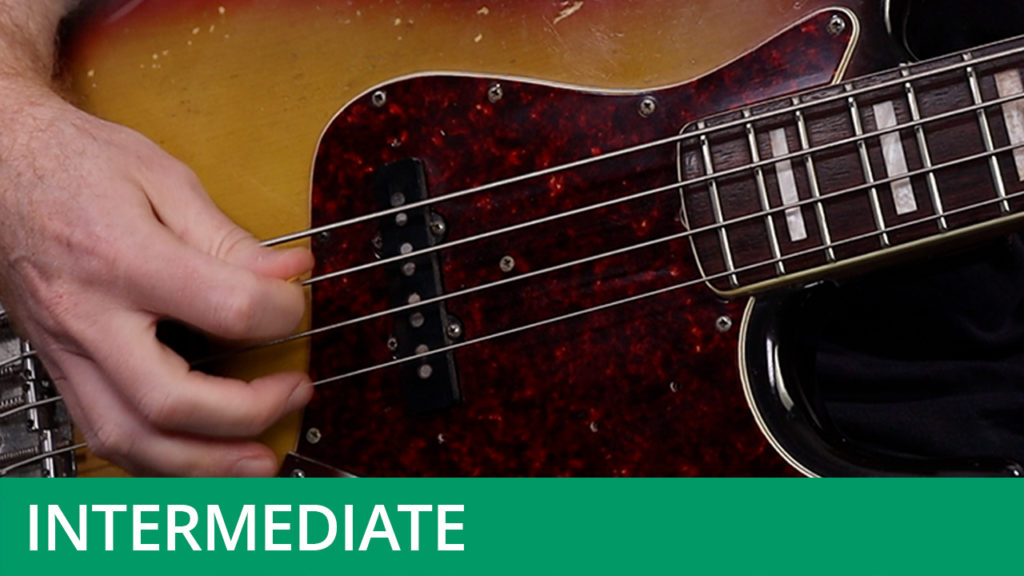Bass Lick of the Week #8
Course Duration: | Difficulty Level: 6
This is a chordal plectrum part that makes good use of power chords, major pentatonic lines and open string tenths.
When learning this line it’s important that you stick to the picking guide that’s been written between the staves. Remember that when playing semiquaver-based lines with a plectrum, you should adhere to the down-up-down-up picking sequence on the four subdivisions of the beat. This means that ater playing the downstroke at the beginning of the first bar, the next chord is played as an upstoke as it falls on the fourth semiquaver of the beat: DOWN-up-down-UP. Doing so will mean that you will land on the downbeat of beat two with a nice strong downstroke.
The triplet phrase on the third beat is played using hammer-ons and pull-offs, with the note on the A-string at the end of the beat played with a downstroke. The hammer-on at the beginning of the fourth beat is played with a downstroke. The following note should also be played with a downstroke, although an upstroke would also be acceptable here as the rhythm is quaver-based and therefore slower. The next bar in the sequence is played in exactly the same way, but a tone lower.
In the third bar, the same picking pattern is used again for the first two beats of the bar. The open A should then be allowed to ring whilst you play the ascending phrase on the D-string. This line moves chromatically upwards to the major third of the chord (C#), which outlines the harmony nicely.
The fourth and final bar of the sequence uses a simple semiquaver rhythm to play two further chords, C5 and D5. Make sure that the ghost notes are played as such here - these are rhythmic devices, intended to keep the groove moving along.
To download the backing track and PDF worksheet for this exercise, please visit the Free Stuff section of the website.




